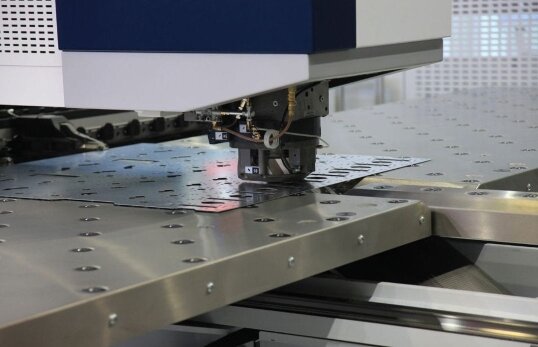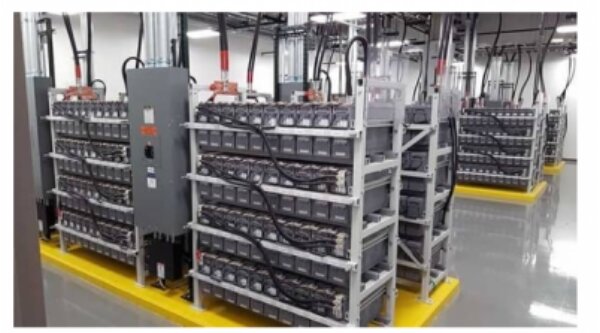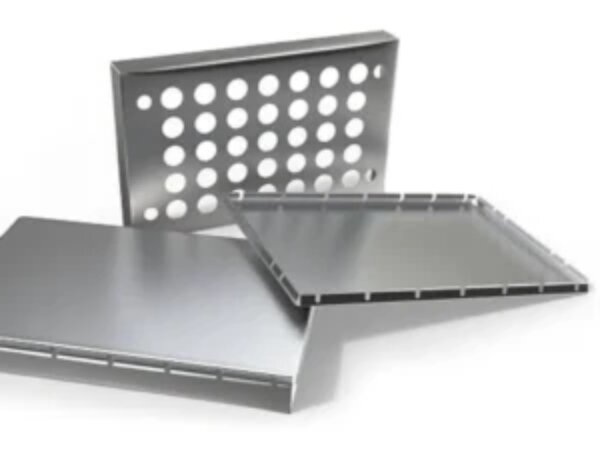스위스 가공은 복잡하게 들릴 수 있지만 일반적인 제조 문제를 해결하는 핵심 기술입니다. 스위스 가공은 엄격한 공차, 복잡한 부품 또는 소량 생산을 처리할 수 있는 솔루션을 제공합니다. 이 방법은 특히 미세한 디테일이 있는 정밀 부품을 제작하는 데 효과적입니다.
스위스 가공이 다른 방법과 어떻게 다른지 자세히 알고 싶으신가요? 스위스 머시닝이 어떻게 작동하는지, 그리고 다음 프로젝트에 스위스 머시닝이 적합한 이유를 살펴보세요.
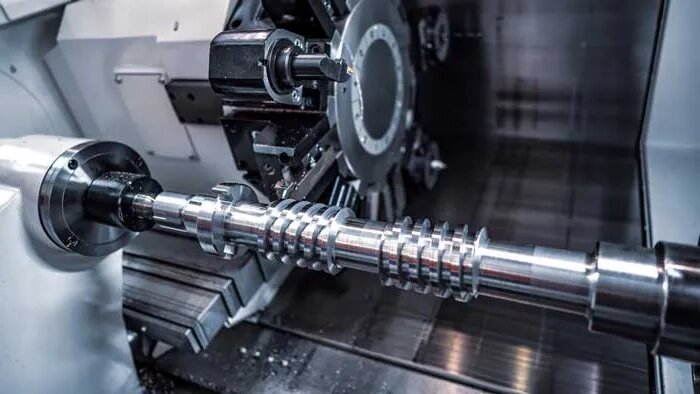
스위스 가공이란 무엇인가요?
스위스 머시닝은 소형 고정밀 부품을 생산하는 CNC의 한 유형입니다. 슬라이딩 주축대와 가이드 부싱으로 공작물을 지지하여 진동을 줄이고 더 엄격한 공차를 허용합니다.
스위스 머시닝은 스위스 시계 제조에서 유래한 이름입니다. 이 공정은 작고 정밀한 시계 부품을 만들기 위해 만들어졌습니다.
기존 선반에서는 재료가 한쪽 끝에만 고정되어 있어 절삭력이 가해질 때 휘어질 수 있습니다. 스위스 기계는 절단 지점에서 재료를 지지하여 이 문제를 해결합니다.
스위스 기계는 어떻게 작동하나요?
스위스 기계는 슬라이딩 주축대 원리로 작동합니다. 절삭 공구가 고정되어 있는 동안 주축 재료는 가이드 부싱을 통해 미끄러집니다.
기존 선반과 가장 큰 차이점은 가이드 부싱 바로 앞에서 절삭이 이루어진다는 점입니다. 따라서 필요한 곳에 정확하게 지지력을 제공하고 휨을 방지할 수 있습니다.
스위스 기계는 공구를 재료에 밀어 넣는 것이 아니라 부싱을 통해 재료를 당깁니다. 이 "당기는" 동작은 보다 안정적인 절삭 조건을 만들어냅니다.
Z축 이동은 앞뒤로 미끄러지는 주축에서 비롯됩니다. 이 설계 덕분에 깊이와 위치를 정확하게 제어할 수 있습니다.
대부분의 스위스 기계에는 주 스핀들과 서브 스핀들이 모두 포함되어 있습니다. 메인 스핀들은 초기 작업 중에 소재를 고정하고, 서브 스핀들은 위치를 변경하지 않고 백엔드 작업을 완료하기 위해 소재를 잡을 수 있습니다.
스위스 기계의 공구 포스트에는 일반적으로 여러 개의 절삭 공구가 장착되어 있습니다. 기계는 이러한 공구를 빠르게 전환하여 사이클 시간을 단축할 수 있습니다.
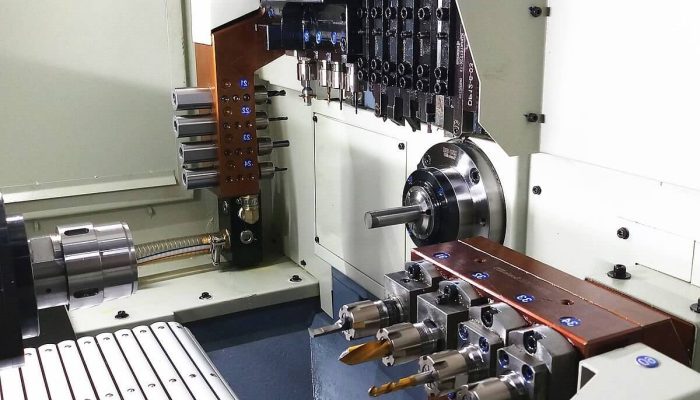
스위스 머시닝의 이점
스위스 가공은 최고의 정밀도를 제공하지만 귀사의 프로젝트에 적합할까요? 최상의 제조 결정을 내리는 데 도움이 되는 스위스 가공의 뛰어난 장점과 주요 제한 사항을 살펴보세요.
더 높은 정밀도
스위스 기계는 매우 엄격한 공차를 달성할 수 있습니다. 가이드 부싱 시스템은 절단 중에 재료를 안정적으로 유지하여 오류 발생 가능성을 줄여줍니다.
더 빠른 생산
스위스 기계를 사용하면 여러 공구를 동시에 부품에 사용할 수 있습니다. 이는 더 빠른 사이클 타임과 더 높은 생산량을 의미합니다.
복잡한 부품을 하나의 설정으로
스위스 기계는 기계 간에 부품을 이동하지 않고도 여러 작업을 수행할 수 있습니다. 단일 설정으로 다음을 처리할 수 있습니다. 선회, 갈기, 교련, 그리고 스레딩.
잠재적 과제와 한계
스위스 가공은 강력하지만 모든 프로젝트에 적합한 선택은 아닙니다. 고려해야 할 주요 제한 사항은 다음과 같습니다:
크기 제한
스위스 기계는 일반적으로 최대 직경 1.25인치(32mm)의 재료를 처리합니다. 더 큰 부품은 기존 CNC 방식이 필요합니다.
길이 대 직경 비율에도 실질적인 한계가 있습니다. 길이 대 직경 비율이 극단적인 부품은 특별한 고려 사항이나 대체 공정이 필요할 수 있습니다.
재료 제한
스위스 가공은 직선적이고 일정한 봉재 형태로 들어오는 소재에 가장 적합합니다. 불규칙한 모양의 원자재는 적합하지 않습니다.
이 공정에는 직경 공차가 엄격한 봉재가 필요합니다. 이로 인해 재료 옵션이 제한되거나 재료 비용이 추가될 수 있습니다.
학습 곡선
스위스 기계를 프로그래밍하려면 전문 지식이 필요합니다. 학습 곡선은 기존 CNC 프로그래밍보다 가파릅니다.
스위스 기계의 숙련된 운영자와 프로그래머를 찾는 것은 어려울 수 있습니다. 교육에 더 오랜 시간이 걸리고 숙련된 직원은 더 높은 임금을 요구합니다.
설정 시간
스위스 가공에 필요한 정밀도는 더 긴 설정 시간을 의미합니다. 가이드 부싱은 스핀들에 완벽하게 정렬되어야 합니다.
공구 위치 지정 및 프로그램 검증에는 기존 CNC보다 더 많은 시간이 소요되므로 퀵턴, 일회성 부품의 실용성이 떨어집니다.
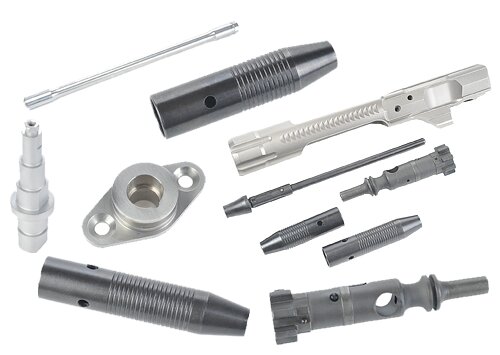
스위스 가공에 사용되는 재료
스위스 기계는 다음과 같은 다양한 재료로 작업할 수 있습니다:
- 스테인레스 스틸
- 탄소강
- 티탄
- 놋쇠
- 알류미늄
- 플라스틱
- 나일론
이 공정은 바 스톡으로 성형하여 기계를 통해 공급할 수 있는 재료에 가장 적합합니다.
스위스 가공과 기존 가공 비교
스위스 가공은 많은 이점을 제공하지만 항상 최선의 선택은 아닙니다. 다음은 간단한 비교입니다:
| 특징 | 스위스 가공 | 전통적인 가공 |
|---|---|---|
| 부품 크기 | 소형(1.25" 미만) | 소형에서 대형 |
| 물질적 지원 | 절단 지점 | 한쪽 끝만 |
| 도구 용량 | 여러 도구가 동시에 작동 | 한 번에 작동하는 도구 수 감소 |
| 공차 | 매우 타이트(±0.0001") | 양호(±0.001") |
| 생산 속도 | 복잡한 부품에 매우 빠른 속도 | 보통의 |
| 설치 시간 | 더 길고, 더 복잡해진 | 더 짧고, 더 단순하게 |
| 소규모 실행 비용 | 높은 초기 설정 비용 | 시작 비용 절감 |
| 대규모 실행 비용 | 부품당 비용 절감 | 더 높은 부품당 비용 |
| 복잡성 기능 | 복잡한 기능에 탁월 | 단순한 디자인에 더 적합 |
| 무인 운영 | 확장 실행 가능 | 제한된 실행 |
| 학습 곡선 | 더 가파른 프로그래밍 요구 사항 | 더 간단하게 |
| 이상적인 애플리케이션 | 고정밀 소형 부품 | 더 크고 덜 복잡한 부품 |
언제 전통적인 가공보다 CNC 스위스 가공을 선택해야 할까요?
스위스 가공이 항상 최선의 선택은 아닙니다. 다음은 이 특수 공정을 언제 사용할지 결정하는 데 도움이 되는 주요 요소입니다.
복잡한 디자인
부품에 여러 기능이 있어 기존 기계에서 여러 번 설정해야 하는 경우 스위스 머시닝을 선택하십시오. 가이드 부싱 시스템을 사용하면 한 번의 설정으로 다양한 각도에서 공구가 부품에 접근할 수 있습니다.
스위스 기계는 양쪽 끝의 공차가 엄격한 부품 가공에 탁월합니다. 서브 스핀들이 부품을 잡아 위치를 변경하지 않고도 백엔드 작업을 완료할 수 있습니다.
스위스 가공은 나사산, 홈, 교차 구멍 등 복잡한 형상을 가진 부품에 유리합니다. 이러한 기능은 기계 간에 이동하지 않고 한 번의 작업으로 완료할 수 있습니다.
설정 시간
설정 시간을 고려할 때는 총 생산량을 고려하세요. 스위스 기계는 설정하는 데 시간이 오래 걸리므로 중대형 생산에 가장 적합합니다.
기존 CNC는 다음과 같은 경우에 더 비용 효율적일 수 있습니다. 프로토타입 또는 아주 작은 배치 실행. 설정 시간이 빨라지면 소량의 부품을 만들 때 느린 생산 속도를 상쇄할 수 있습니다.
지속적인 생산 요구에 따라 스위스 가공은 더욱 경제적이 되었습니다. 높은 설정 비용이 더 많은 부품에 분산되고 사이클 시간이 빨라져 부품당 비용이 절감됩니다.
제조를 위한 설계(DFM)
스위스의 가공 능력을 염두에 두고 부품을 설계하세요. 최대 3:1의 L/D 비율을 가진 소구경 부품은 이 공정에 이상적입니다.
불필요한 공차를 최소화합니다. 스위스 기계는 정확한 치수를 얻을 수 있지만, 공차가 엄격할수록 비용과 복잡성이 증가합니다.
가능하면 표준 재료를 사용하십시오. 스위스 기계는 직선적이고 일정한 직경의 봉재로 성형할 수 있는 재료에 가장 잘 작동합니다.
스위스 CNC 가공의 모범 사례
스위스 가공을 최대한 활용하려면 현명한 설계 선택부터 시작해야 합니다. 다음과 같은 기본 규칙을 준수하면 부품 품질을 최적화하고 비용을 최소화하며 생산 문제를 방지할 수 있습니다.
표준 크기 구멍
가능하면 표준 구멍 크기를 사용하세요. 표준 드릴 비트와 리머는 맞춤형 크기보다 저렴한 비용으로 더 나은 결과를 만들어냅니다.
가장 일반적인 홀 크기(1/16", 1/8", 1/4" 등)는 고품질 툴링에서 쉽게 사용할 수 있습니다. 이는 더 나은 홀 품질과 더 긴 공구 수명을 의미합니다.
작은 구멍에는 현실적인 한계가 있다는 것을 기억하세요. 일반적으로 0.5mm보다 작은 구멍은 생산 환경에서 안정적으로 생산하기 어렵습니다.
날카로운 모서리를 피하세요
날카로운 내부 모서리 대신 작은 반경으로 부품을 설계합니다. 날카로운 모서리는 부품과 절삭 공구 모두에 응력 지점을 생성합니다.
대부분의 응용 분야에서는 최소 0.005인치 또는 0.1mm의 내부 모서리 반경을 사용하는 것이 좋습니다. 이 작은 반경은 부품 기능에 영향을 주지 않으면서 공구 수명을 크게 연장합니다.
공구 형상으로 인해 완벽한 90° 내부 모서리는 어차피 불가능합니다. 처음부터 작은 반경을 계획하면 더 예측 가능한 결과를 얻을 수 있습니다.
용인
부품이 올바르게 작동할 수 있는 가장 느슨한 공차를 지정합니다. 공차가 엄격할수록 부품에 비용이 추가됩니다.
스위스 가공으로 ±0.002인치(0.05mm)의 일반 공차를 쉽게 달성할 수 있습니다. 0.0005인치(0.01mm)의 더 엄격한 공차도 가능하지만 비용이 추가됩니다.
0.0002″(0.005mm) 미만의 초정밀 공차는 특별한 취급과 검사가 필요합니다. 필요한 경우에만 지정하세요.
벽 두께
가공할 소재에 맞는 적절한 벽 두께를 유지합니다. 벽이 얇으면 가공 중에 휘어져 치수 문제가 발생할 수 있습니다.
대부분의 금속의 경우 벽 두께를 0.02인치(0.5mm) 이상으로 유지합니다. 더 얇은 벽도 가능하지만 절단 속도가 느려지고 더 조심스럽게 다루어야 합니다.
길이 대 벽 두께 비율을 고려합니다. 벽 두께가 얇고 긴 섹션은 가공 시 처짐과 진동이 발생하기 쉽습니다.
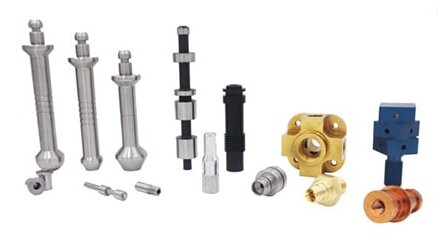
스위스 머시닝의 응용 분야
스위스 기계 가공은 정밀도가 가장 중요한 분야에서 빛을 발합니다. 이러한 산업에서는 매일 이 기계에 의존합니다:
의료기기 제조
스위스 기계 가공은 의료 기기에 필요한 작고 정밀한 부품을 제작합니다. 뼈 나사, 치과 임플란트, 수술 기구 모두 이 기술의 이점을 누릴 수 있습니다.
티타늄 및 스테인리스 스틸과 같이 의료 기기에 사용되는 생체 적합성 소재는 스위스 기계 가공과 잘 어울립니다. 이 공정은 재료의 특성을 유지하면서 필요한 정밀도를 달성합니다.
항공우주 및 방위 부품
항공우주 산업은 중요한 소형 부품을 스위스 가공에 의존하고 있습니다. 연료 시스템 부품, 센서 하우징 및 고정밀 패스너 가 대표적인 애플리케이션입니다.
항공우주 분야에서는 경량화가 매우 중요합니다. 스위스 가공은 무게를 최소화하면서 강도를 유지하는 얇은 벽의 부품을 만들 수 있습니다.
자동차 및 전자 커넥터
오늘날의 차량에는 스위스 기계 가공으로 제작된 수많은 정밀 부품이 포함되어 있습니다. 이 공정은 연료 인젝터, 브레이크 시스템 부품 및 센서 부품에 도움이 됩니다.
전자 커넥터는 안정적인 연결을 보장하기 위해 완벽한 치수가 필요합니다. 스위스 기계 가공은 필요한 엄격한 공차를 가진 핀과 소켓을 제작합니다.
워치메이킹 및 하이엔드 정밀 부품
스위스 가공은 시계 제조 산업에서 시작되었습니다. 기계식 시계의 작은 기어, 핀, 샤프트를 만드는 데 여전히 선호되는 방식입니다.
명품 시계 브랜드는 스위스 기계 가공이 제공하는 완벽한 마감에 의존합니다. 이 공정은 기계에서 바로 표면 품질이 뛰어난 부품을 만들어냅니다.
결론
스위스 가공은 작고 복잡한 부품에 탁월한 정밀도를 제공합니다. 가이드 부싱을 지지하는 슬라이딩 주축대 설계로 다른 방식으로는 어렵거나 불가능한 공차가 엄격한 부품을 제작할 수 있습니다.
스위스 가공의 혜택을 받을 수 있는 프로젝트가 있으신가요? 당사의 전문가 팀이 귀사의 부품에 이 정밀 공정이 적합한지 판단하는 데 도움을 드릴 수 있습니다. 무료 상담 및 견적을 원하시면 지금 바로 도면을 보내주세요..
자주 묻는 질문
스위스 가공 부품의 일반적인 공차 수준은 어느 정도인가요?
스위스 기계는 생산 환경에서 일반적으로 ±0.0005인치(0.013mm)의 허용 오차를 달성합니다. 설정 및 측정에 특별한 주의를 기울이면 ±0.0001인치(0.0025mm)의 엄격한 허용 오차도 가능합니다.
스위스 가공은 5축 CNC 밀링과 어떻게 다릅니까?
스위스 가공은 소형 선삭 부품을 더 빠르게 가공합니다. 가이드 부싱 시스템과 다양한 공구를 사용하면 직경이 작은 부품에서 재료를 빠르게 제거하고 피처를 생성할 수 있습니다.
5축 밀링은 더 많은 기하학적 자유도를 제공합니다. 스위스 기계로는 불가능한 복잡한 윤곽의 표면과 피처를 만들 수 있습니다.
스위스 기계는 대구경 공작물을 처리할 수 있습니까?
대부분의 스위스 기계는 재료 직경이 1.25인치(32mm) 이하로 제한됩니다. 일부 대형 스위스 기계는 최대 1.5인치(38mm) 직경의 재료를 처리할 수 있습니다.
절차는 얼마나 걸리나요?
스위스 가공의 설정 시간은 일반적으로 부품의 복잡성에 따라 2시간에서 8시간까지 걸립니다. 여기에는 프로그래밍, 공구 설정 및 첫 번째 공작물 검사가 포함됩니다.
부품의 실제 사이클 시간은 복잡성에 따라 크게 달라집니다. 간단한 부품은 개당 몇 초밖에 걸리지 않지만 복잡한 부품은 몇 분이 걸립니다.
안녕하세요, 저는 케빈 리입니다

지난 10년 동안 저는 다양한 형태의 판금 제작에 몰두해 왔으며 다양한 워크숍에서 얻은 경험에서 얻은 멋진 통찰력을 이곳에서 공유했습니다.
연락하세요

케빈 리
저는 레이저 절단, 굽힘, 용접 및 표면 처리 기술을 전문으로 하는 판금 제조 분야에서 10년 이상의 전문 경험을 갖고 있습니다. Shengen의 기술 이사로서 저는 복잡한 제조 문제를 해결하고 각 프로젝트에서 혁신과 품질을 주도하는 데 최선을 다하고 있습니다.

